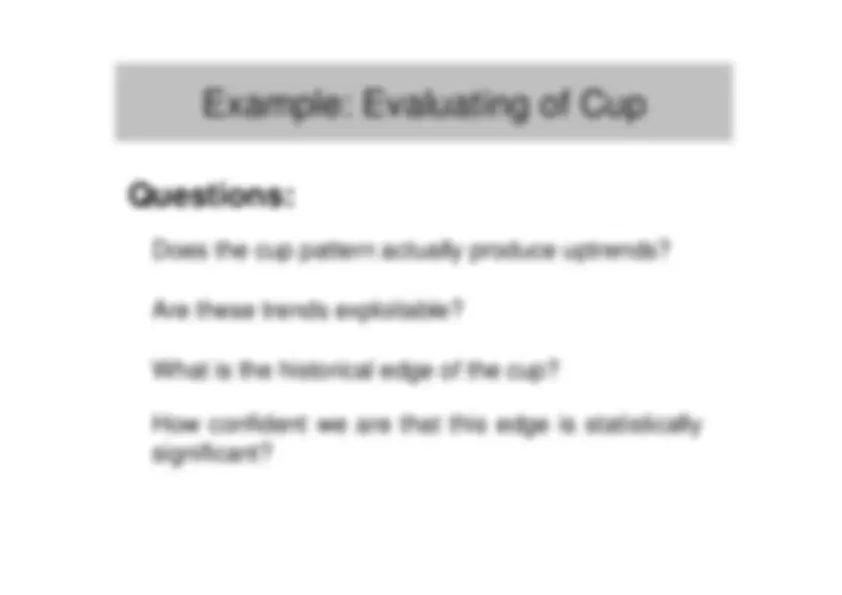





























Study with the several resources on Docsity

Earn points by helping other students or get them with a premium plan


Prepare for your exams
Study with the several resources on Docsity

Earn points to download
Earn points by helping other students or get them with a premium plan
Community
Ask the community for help and clear up your study doubts
Discover the best universities in your country according to Docsity users
Free resources
Download our free guides on studying techniques, anxiety management strategies, and thesis advice from Docsity tutors
The identification procedures for chart patterns using algorithmic methods. It covers three major identification methods used in academic literature, including smoothing price data, zigzag-ing, and matrix templates. The document also explores academic approaches in finance and computer science and provides examples of published algorithms for chart pattern identification.
Typology: Slides
1 / 35

This page cannot be seen from the preview
Don't miss anything!




























Key Benefits
Algorithmic Identification of
Chart Patterns
literature (finance and computer science)
Outline of the Talk
Three major identification methods in academic financial literature.
Academic Approaches (Finance)
2 nd^ Method (“Zigzag-ing”)
(disregard changes below x% cutoff
Trough
Trough
Peak
Peak
Peak
Academic Approaches (Finance)
A matrix template models the desired 0 0 0 0 0 0 0 An iconic 12x12 matrix template for H&S
- + pattern using weights - + - 0 +2 +2 + - + - + - +2 + - +2 + - + - + - +2 +2 + - +2 + - +2 + - +2 + - +2 + - +2 + - +2 +2 +2 + - +2 +2 + - +2 + - +2 +2 +2 +2 + - +2 + - + - + - + - +1 + - + - + - + - - - - - - - - - - - - - - - - - - - - - - - - - - - - - - - - - - - - - - - - - - - - - - - - - - - - - -1 -1 - - -1 - 3 rd^ Method (Matrix Templates)
x x
x x
x
x x
x x x
x x x
x x
x
x x
x
x
x
x
x x x
x
x x x x x x x
x x
x
x x
x
x x
x x
x
x
x
x x
x
x
x x x
x x
x x
x
x
x
x
x x
x x
The price action is
then converted into
matrix form
Academic Approaches (Finance)
3 rd^ Method (Matrix Templates)
Sum up all weights for
the price action
x x
x x
x
x x
x x x
x x x
x x
x
x x
x
x
x
x
x x x
x
x x x x x x x
x x
x
x x
x
x x
x x
x
x
x
x x
x
x
x x x
x x
x x
x
x
x
x
x x
x x
The higher the sum, the
better the price action fits
the pattern model
Academic Approaches (Finance)
My Published Algorithms on Chart
Pattern Identification
Focus on:
To accomplish the above:
I created different algorithms per case (pattern)
Simple ideas I have Used (I)
Simple ideas I have Used (II)
When a branch of a chart pattern is more or less curved, you can usually identify its important points
(no matter the scale)
Example:
Identifying the top of the head in H&S
The highest of them is the top of the head
What is a Cup pattern?
Identifying the Cup
A
Let C be the lowest low of all red bars
C